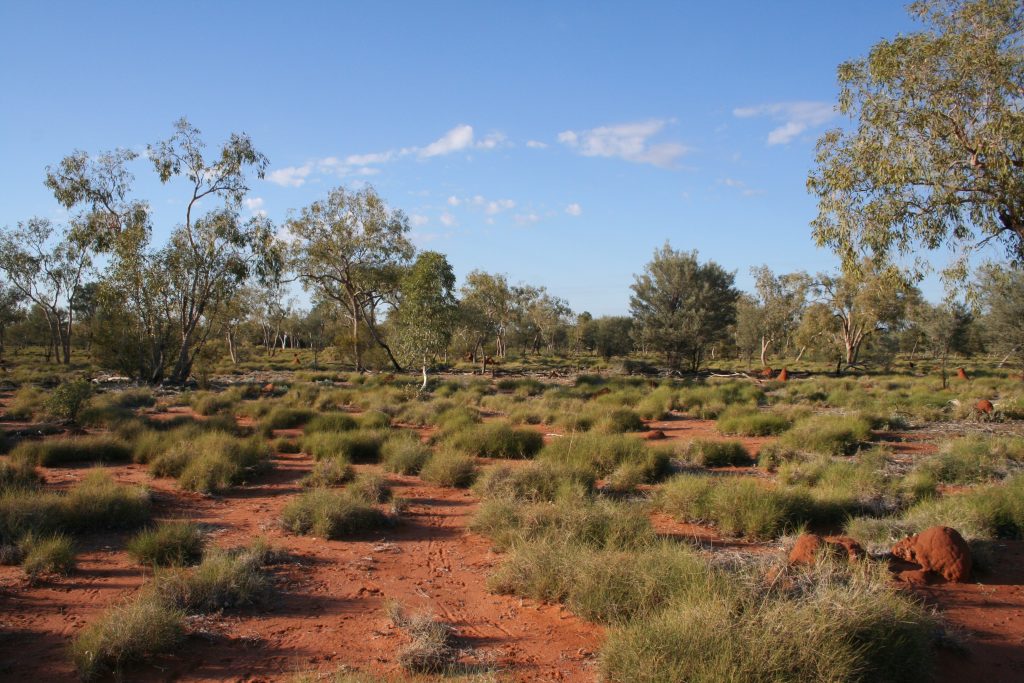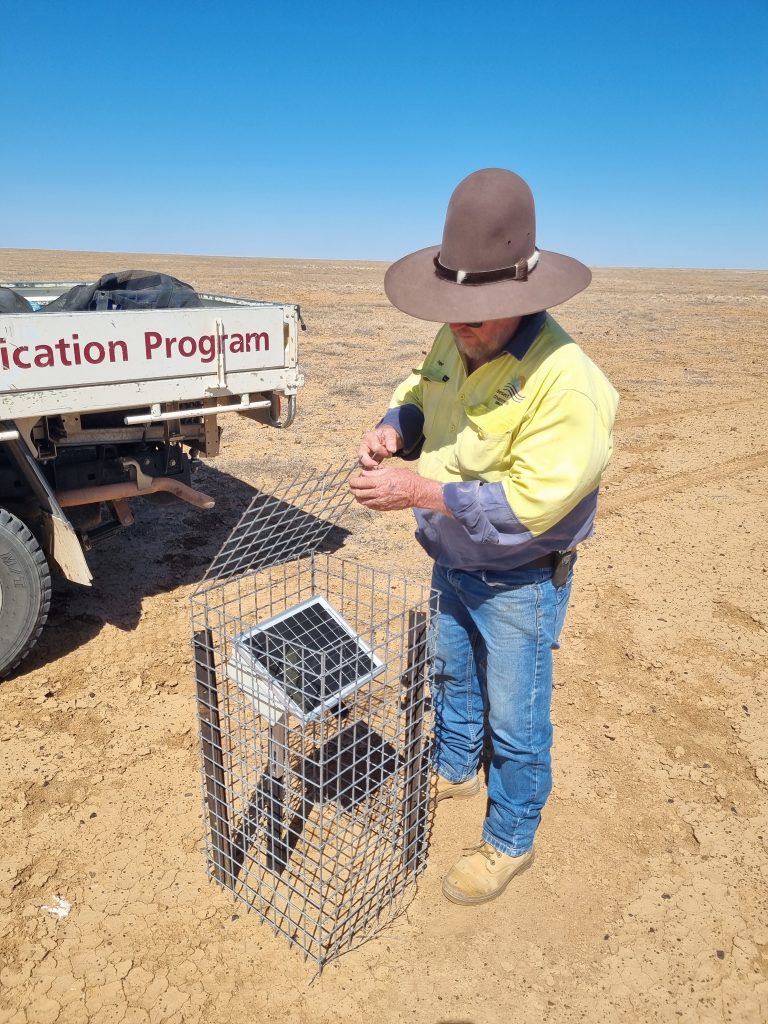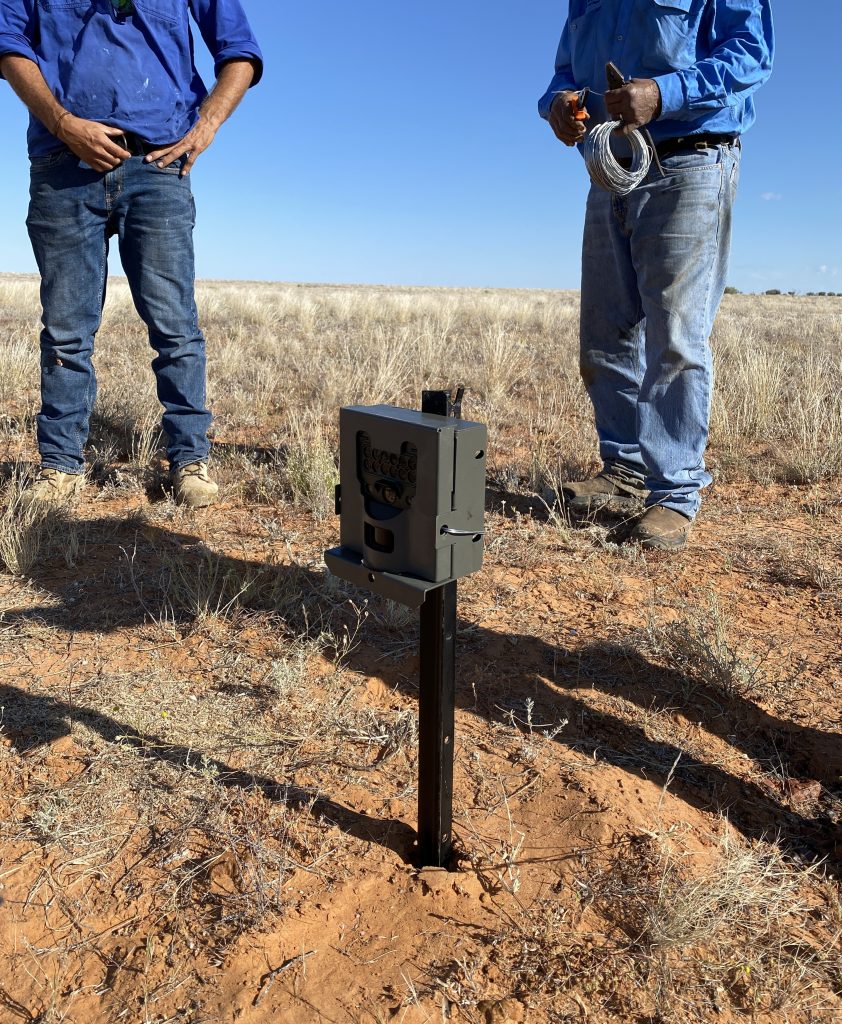Night parrot listed as ‘critically endangered’ as monitoring underway

An elusive, rare parrot once thought to be extinct.
Night parrots were once a widespread species in the Desert Channels region.
But in 1912, the nocturnal bird went missing – and wasn’t seen again for another 80 years.
It wasn’t sighted again until the 1990s when a body of a night parrot was discovered on an outback road, launching a nation-wide effort to conserve this rare cryptic bird.
What is the night parrot?
Night parrots are a medium-sized, ground-dwelling bird that nests in spinifex clumps and will often forage for seeds at night, making it vulnerable to nocturnal predators.

Spinifex (Triodia sp.) is an important habitat for native species in Western Queensland, including the Night Parrot. (Photo: Desert Channels Queensland)
It’s estimated that there are between 40 to 1,000 breeding pairs of night parrot (Pezoporius occidentalis) left in spinifex habitat across arid Australia.
DCQ Operations Manager Geoff Penton said the night parrot had developed some tactics to reduce the chances of it being caught by a feral animal on the hunt.
“Night parrots hide amongst the grass and spinifex, which is a pretty spiky species, so it probably thinks it’s got a fair amount of protection.”
“Some of the oldest clumps of spinifex are quite spikey and could deter predators, but feral cats are tenacious and are more than willing to wait for an opportunity to strike.”

Feral foxes and feral cats are some of the most significant threats to the night parrot.
In Australia, feral cats have a devastating impact on native species and eat a combined total of 1.2 million native birds, 1.9 million reptiles and 3.2 million mammals each day.
Other threats to night parrot include habitat loss due to drought, bushfires and overgrazing.
Program underway to protect ‘priority’ species
Last month, the status of the night parrot was upgraded to “critically endangered” following a review by the Australian Conservation Foundation.
That’s why conserving night parrot is so important.
This year, Desert Channels Queensland has been monitoring night parrot as one of four priority threatened species in the Western Queensland region.

Dozens of bioacoustic recorders are listening out for night parrot’s distinct ‘ping ping’ call. (Photo: Desert Channels Queensland)
The project works alongside 12 different organisations, including pastoralists, conservation groups, state government and Traditional Owners, through a new Channel Country Threatened Species Partnership.
DCQ Operations Manager Geoff Penton told ABC Radio Brisbane last month that a recent spate of “good seasons” could prove promising for finding the little bird.
“We’ve had three great seasons that produced a lot of grass in Western Queensland, so now is a good time to hopefully see an increase in population numbers.”
“And coupled with the work we’ve been doing, reducing feral cat populations, hopefully those two things can come together and we’ll see more night parrots.

The Channel Country Threatened Species Partnership is using cameras to monitor kowari, plains-wanderer and greater bilby. (Photo: Supplied)
Hundreds of acoustic recorders and wildlife cameras are currently listening and watching for threatened species in remote, localised sections of Western Queensland.
Night parrots are most easily detected via their call, commonly a ‘ding ding’ piping call.
In the past decade, there has been an uptick in sightings of night parrot from the Pilbaras in Western Australia to remote properties in Western Queensland.
Alongside targeted feral cat control, our hope is that this project will generate more opportunities for greater research and conservation of this rare parrot species.
This project is funded through the Australian Government’s Saving Native Species Program.

